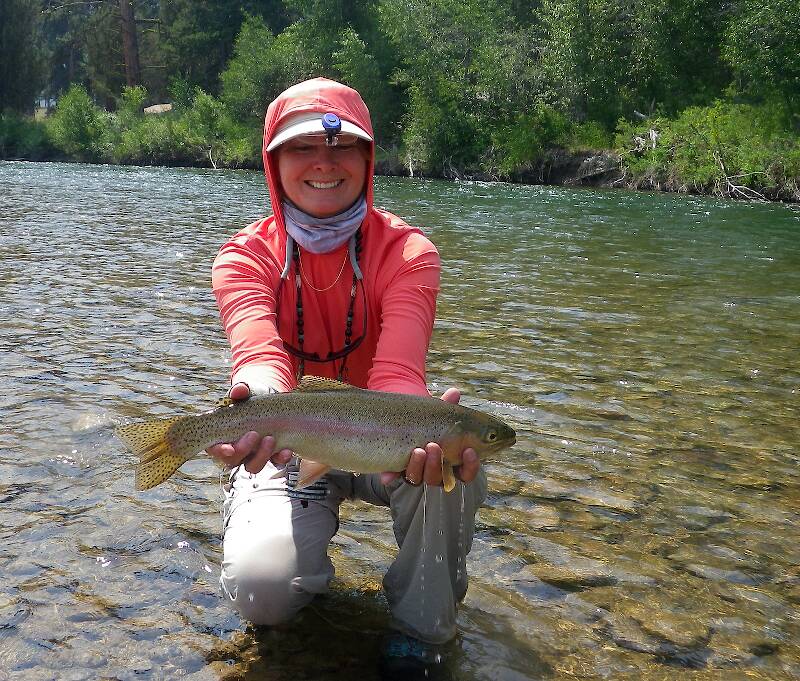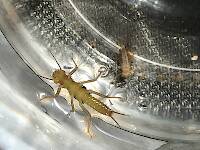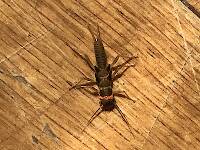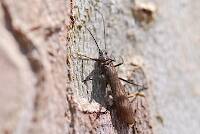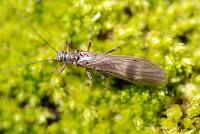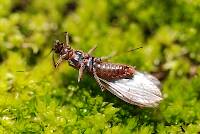
Blue-winged Olives
Baetis
Tiny Baetis mayflies are perhaps the most commonly encountered and imitated by anglers on all American trout streams due to their great abundance, widespread distribution, and trout-friendly emergence habits.
Featured on the forum

This wild-looking little thing completely puzzled me. At first I was thinking beetle or month larva, until I got a look at the pictures on the computer screen. I made a couple of incorrect guesses before entomologist Greg Courtney pointed me in the right direction with Psychodidae. He suggested a possible genus of Thornburghiella, but could not rule out some other members of the tribe Pericomini.

Troutnut is a project started in 2003 by salmonid ecologist Jason "Troutnut" Neuswanger to help anglers and
fly tyers unabashedly embrace the entomological side of the sport. Learn more about Troutnut or
support the project for an enhanced experience here.
Cherylkorca has attached these 5 pictures to aid in identification. The message is below.
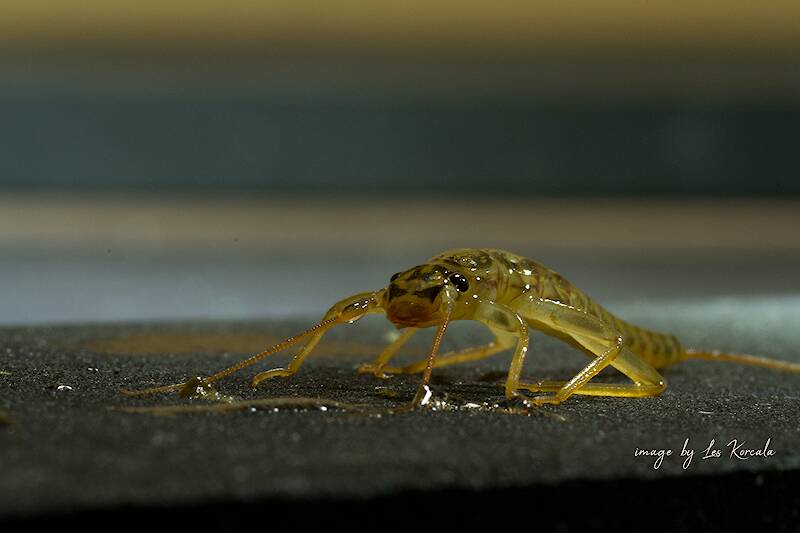
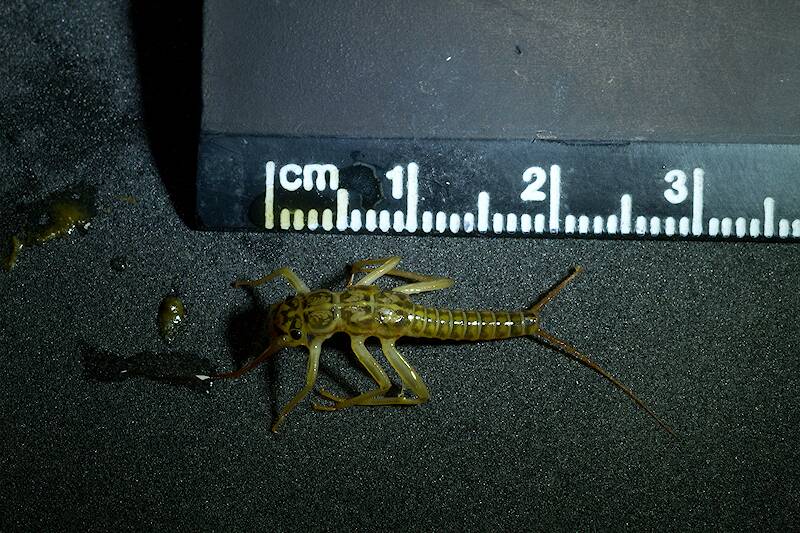
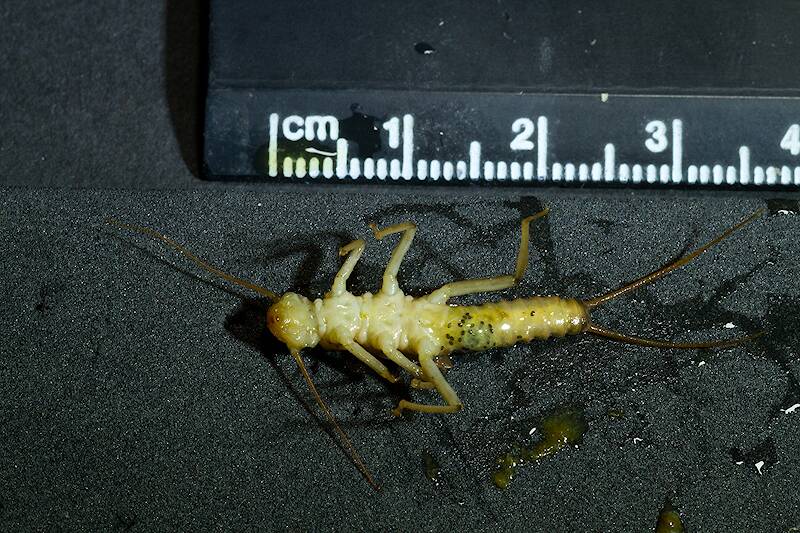
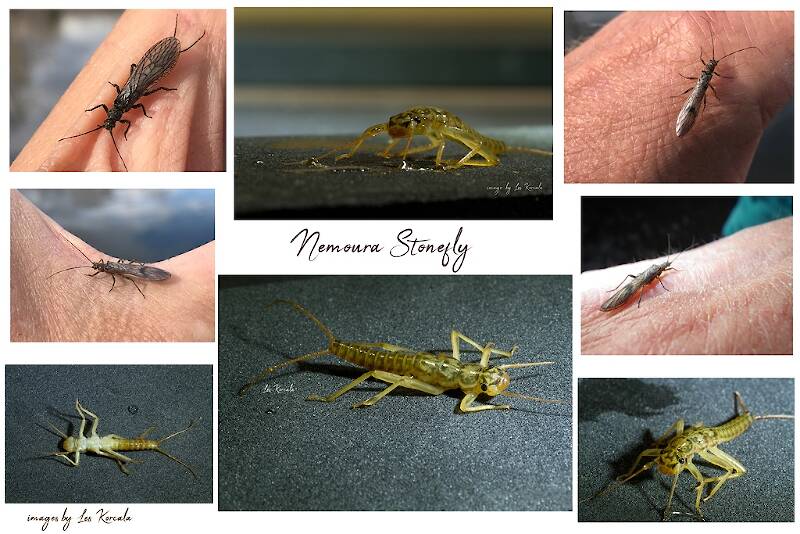
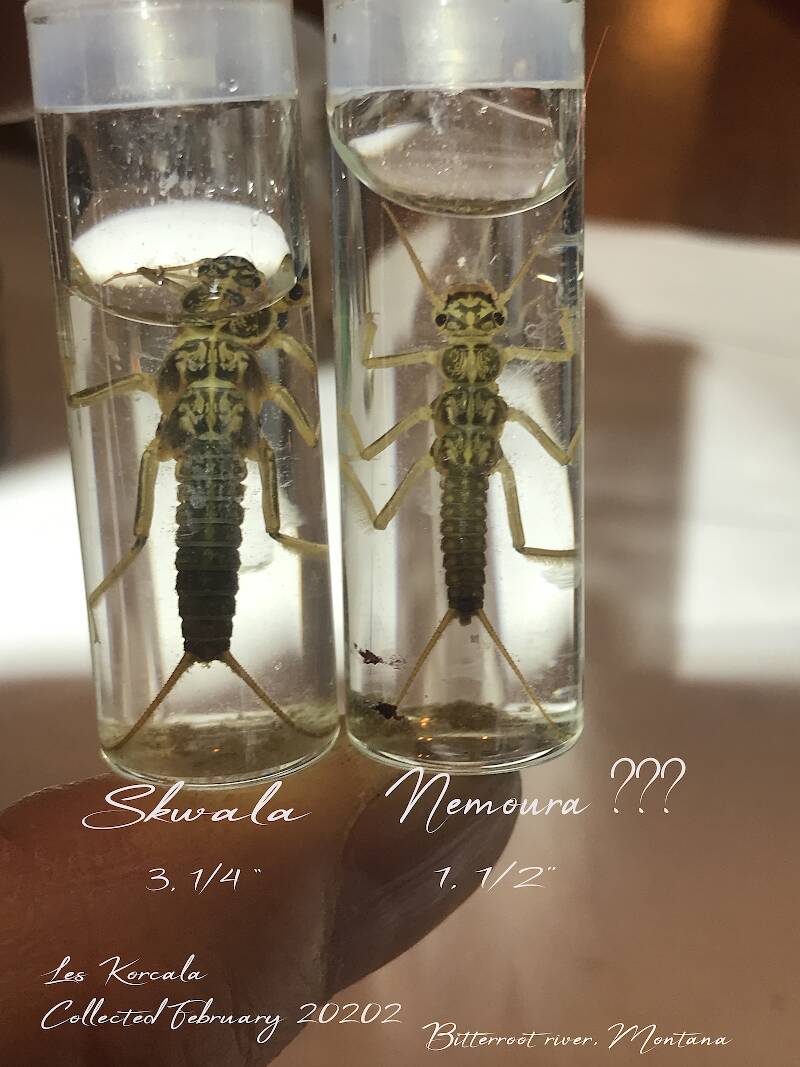
Cherylkorca on Feb 18, 2020February 18th, 2020, 4:17 pm EST
Hello, I did recently sampled our home water the Bitterroot river in SW Montana and I collected 2 stoneflys specimens and I know for fact one of them is Skwala nymph but the smaller one wanted to verify if is Nemoura nymph , the problem I am having is that this stone fly nymph appear to be much larger in length that my good reference book Aquatic insects by Rick Hafele shows ?
The do overlap each other i emergance time , Capnia first ( smallest of 3 ) than Nemoura and than biggest Skwala
Thank you for anyone who could help out with this nymph ID , I did include collage with adult Nemoura and hope to be a nymph in same order , but not so sure about the nymph ??
The do overlap each other i emergance time , Capnia first ( smallest of 3 ) than Nemoura and than biggest Skwala
Thank you for anyone who could help out with this nymph ID , I did include collage with adult Nemoura and hope to be a nymph in same order , but not so sure about the nymph ??
Millcreek on Feb 19, 2020February 19th, 2020, 2:05 am EST
My guess is that it's not a Nemouridae, but a Perlodidae. The easiest way to tell the difference is to look at the mouth. If you have access to a microscope or a magnifying glass take a look at the glossae and paraglossae, they should be more or less the same size in Nemouridae. In Perlodidae the paraglossae should be much larger than the glossae.
"If we knew what it was we were doing, it would not be called research, would it?"
-Albert Einstein
-Albert Einstein
Leskorcala
Posts: 16
Posts: 16
Leskorcala on Feb 24, 2020February 24th, 2020, 4:39 pm EST
Hello , Thank you for a great tip to distinguish two however i have bad eyes ( blind on one ) and use magnifying glass 8X but i can not see it.I did take several closeup images with my camera , perhaps I can show it to you.
I need to figure out first how to attach some images.
I need to figure out first how to attach some images.
Quick Reply
Related Discussions
Topic
Replies
Last Reply
21
Feb 19, 2013
by Gutcutter
by Gutcutter
10
Mar 3, 2012
by Entoman
by Entoman
40
Dec 12, 2011
by Keystoner
by Keystoner
18
Feb 10, 2011
by PaulRoberts
by PaulRoberts
10
Sep 10, 2012
by PaulRoberts
by PaulRoberts
13
Mar 30, 2021
by Taxon
by Taxon


